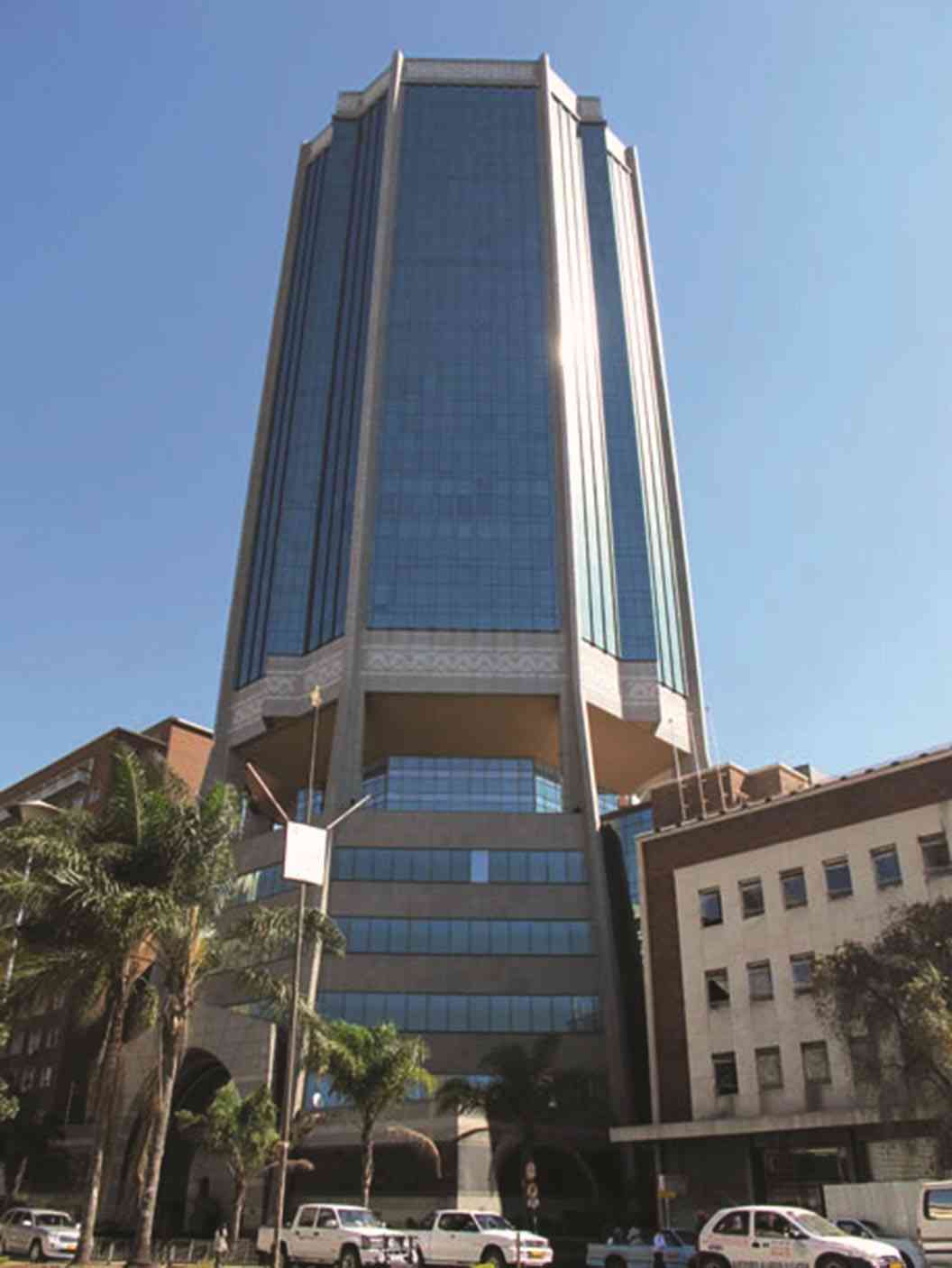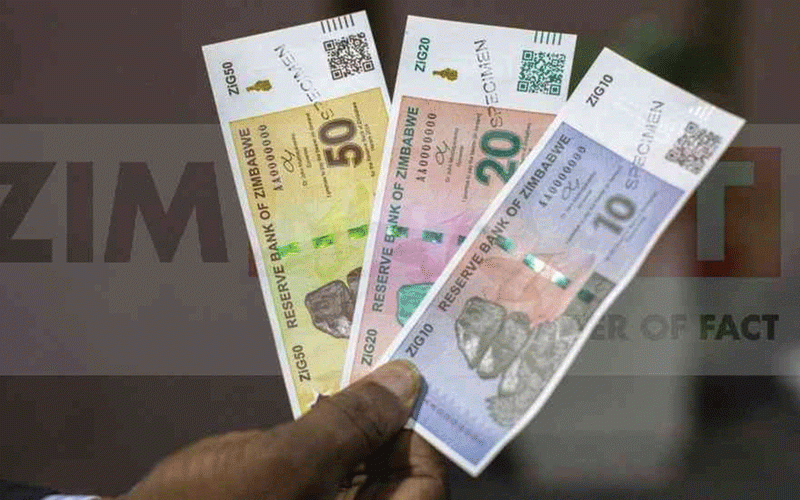
GLOBAL trade is facing uncertainty because of geopolitical friction among the world's major economies.
The United States (US), European Union (EU) and China have set a scene, which is likely to result in disruptions to the normal flows of international trade.
There is talk of punitive tariffs, embargoes and retaliation, going around, and it is being stirred by senior political officials across the divide.
Among other things, global economic uncertainty typically drives investors to seek a safe haven in prominent fiat currencies, such as the US dollar.
For this reason, 2025 is likely going to be the year of a very strong US dollar. The euro will possibly be equally strong.
Implications for Zimbabwe
First, the local currency, Zimbabwe Gold (ZiG) will depreciate on account of a strong dollar.
Second, with a strong US dollar, there is likely to be imported inflation, arising from Zimbabwe's imports, which are invoiced in the currency (US dollar).
- Awards target married couples
- Awards target married couples
- Sibanda living his writing dream
- Pomona deal under spotlight as experts meet
Keep Reading
Imports, which are sold in US dollar terms, will be much more expensive when translated to the local currency. Liquid fuels (petrol and diesel) are a case in point.
As a critical input used in widespread economic activities, a rise in the price of fuel can be expected to drive average domestic prices further upwards.
Also, the decline of local manufacturing means that imports of manufactured (including intermediate and capital) goods will add to inflationary pressures. Third, interest and primary income payments due to foreigners will require more ZiG to secure the same amount of dollars as before.
This might cause liquidity issues in some quarters (private and public sector enterprises, and within government). Third, holders of ZiG may prefer to liquidate it in order to seek a safe haven in the US dollar, euro and other safe haven currencies, causing further depreciation, beyond other current account challenges explained earlier.
Of particular concern is the domestic banking sector.
When there is too much demand for US dollars, for the purpose of facilitating imports, paying foreign denominated debts, and hedging against economic uncertainty, local cash to deposits ratio (for foreign denominated deposits) might shrink.
Expectedly, this may result in the local banking sector failing to honour cash withdrawals on foreign exchange accounts.
If such risks are not managed, they stand a chance of materialising.
Recommendations on how to avert such bank failure are provided in the passages below. Fourth, commodity exports, which are invoiced in US dollars, may experience low demand.
Countries to which Zimbabwe exports its commodities, such as South Africa, China and Dubai, will need to spend more of their local currencies (which will depreciate against the dollar in 2025) in order to secure a similar amount of US dollars as before.
This might be an unfortunate culmination of events because commodity exports comprise more than 50% of Zimbabwe's merchandise exports.
Examples of such goods are platinum, gold, nickel, tobacco, etc. Ultimately, the poor performance of commodity exports will reflect in a possible recession or low economic growth, at best.
There is, however, a good chance that both the strong dollar and euro will ensure that Zimbabwean exports to the US and Europe will not drop by a significant margin.
Proposed solutions
If it were possible, this is a year when it will be desirable for Green Fuel Ltd. and other suppliers of ethanol, to ramp up their production so that imports of petroleum products are kept at a minimal.
There must be no shortage of ethanol for blending with imported fuels, all over the country. Reduced fuel imports imply that there will be less outflows of foreign exchange from the Zimbabwean banking system.
This will help to ensure that the local financial sector retains stability. In the medium term (1-3 years), Zimbabwe will need to seriously consider developing a biodiesel policy, which will lead to the blending of imported diesel with locally-made biofuels, derived from domestically cultivated crops such as soya bean, maize, etc.
This will help to enhance Zimbabwe's energy security and envelop it from the worst effects of external economic shocks. Moreover, employment can be created in both agriculture and manufacturing, if local diesel is mandated to have a 20% domestically-produced biodiesel component, at the pump.
Similarly, policies which promote the establishment of more manufacturing firms in the country will result in a reduced demand for imported manufactures.
With a strong dollar, the Reserve Bank of Zimbabwe (RBZ) might be forced to raise ZiG interest rates, in order to avert a further depreciation of the local currency. That could potentially curtail credit expansion in the ZiG, through the domestic financial sector.
Since high interest rates are recessionary (cause economic contraction), it will be critical to implement the first two proposed responses in order to avert or ameliorate economic disruption as a result of the high ZiG interest rates.
If the RBZ raises interest rates, government borrowing through the usual channels — bonds and Treasury Bills — could become outstandingly expensive. So, if possible, direct RBZ lending to the Treasury (government), at discounted or even zero interest rates, in a manner consistent with Modern Monetary Theory (MMT), may need to be brought into consideration.
Zimbabwe's very low tax-to-GDP ratio, which is between 4%-7% (depending on data used), implies that further government borrowing, using the typical borrowing mechanisms, can be disastrous.
If charged any form of interest on its debt, the government may struggle or even fail to repay. A tax-to-GDP ratio of 4% means that for every US$1 billion of economic activity within Zimbabwe, the government only ends up with US$40 million in tax revenues.
This is mostly because of the high levels of informality within the economy. If the economy was largely formal, the tax-to-GDP ratio would have been much higher. In South Africa, for example, the tax-to-GDP ratio ranges around 27%.
This means that for every US$1 billion worth of economic activity within the borders of South Africa, the SA government typically ends up with a huge US$270 million in tax revenues.
Since the country may not be able to compete based on a large growth in exports, it is timely for the government (both central and local government) to consider the deregulation of the domestic business environment.
Licences, permits and various regulations will need to be relaxed, and in some cases, repealed. This can create a good chance for both foreign and local direct investments, to participate with greater vibrancy, within the economy.
For example, if foreign direct investment (it is typically denominated in US dollars) is drawn into Zimbabwe at record levels, the local currency (ZiG) will not depreciate. In that case, there will not even be a need to raise interest rates for ZiG borrowing, after all.
Growth of the Zimbabwean export sector can also be stimulated through various incentives. Removal of import duty on raw materials, intermediate and capital goods used by exporters, for their production processes, may enable Zimbabwean exporters to sell their products on more competitive grounds and gain greater market share.
Ultimately, more foreign exchange will flow into the Zimbabwean economy, further enhancing stability and raising hopes of growth and job creation.
With a strong US dollar and euro, Zimbabwean exports to the US and EU, which are priced in the ZiG, have a great chance of performing exceptionally well, in 2025. This is because those exports will be effectively cheaper than before, in US dollar and euro terms.
Such exports should be propped up by the government and its agencies (including ZimTrade and the RBZ), within reasonable means. The success of such exports will rake in valued foreign exchange and help to stabilise the ZiG.
An ideal example of such, is the produce of the agro-processing sector; fruit, vegetables, indigenous textiles (and clothing), leather products, etc.
Other light manufactured goods, which are traditionally not exported, can also perform excellently. The trade development body, ZimTrade, has a key role to play in the development of such export products.
Competition laws may need to be relaxed, so that they (the laws) permit domestic firms to use market concentration (mergers, collaborations, etc) as a competitive advantage.
Firm mergers can be accepted for the sake of serving export markets at lower costs and greater efficiency. Super-sized local firms can benefit from economies of scale, which affords them a chance to compete with the most prominent foreign industries, which dominate global value chains.
This also means that inventive (new) measures will become essential for pre-empting the abuse of customers (local and foreign), tepid approach to innovation and illicit financial outflows, which are likely to be problematic if market concentration is eventually permitted.
In essence, Zimbabwe's competition laws need to be re-designed so that they serve the nation, instead of the nation serving them, at the expense of losing out to foreign competition in domestic and international markets.
Currently, the typical Zimbabwean firm is too small to dominate foreign competition in both domestic and foreign markets. So, it is timely to consider amending competition laws, so that market concentration (merging) is encouraged, whilst its adverse effects are comprehensively managed.
Tutani is a political economy analyst. — [email protected].











